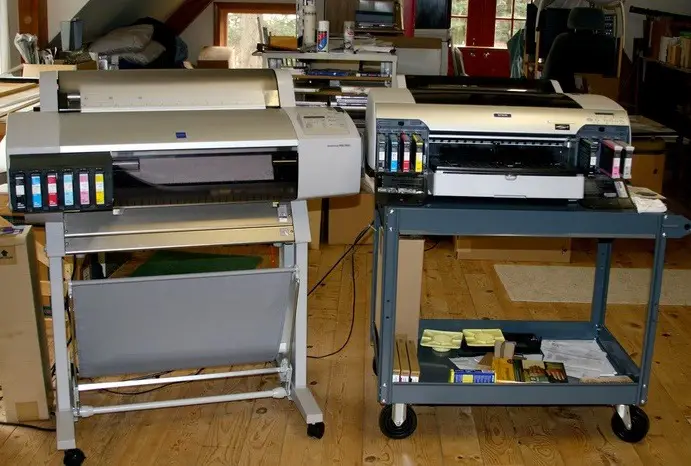Looking back at the basics, a printer is defined as a peripheral which makes a persistent human readable representation of graphics or text on paper or similar physical media. The two most common printer mechanisms are black and white laser printers used for common documents, and color inkjet printers which can produce high quality photograph quality output. Commonly they are the external peripheral devices which are connected with the computers or laptops through a cable or wirelessly to receive input data and print them on the papers. Quality of printers is identified by its features like color quality, speed of printing, resolution etc. Recent printers come with multipurpose functions i.e. they are combination of printer, scanner, photocopier, fax, etc. To serve different needs there are variety of printers available that works on different types of technologies and as per need of the consumer.

[Read also: Reasons Why You Still Need A Printer]
Technically there are two kinds of printers: Impact printers and Non – impact printers. An impact printer makes contact with the paper. It usually forms the print image by pressing an inked ribbon against the paper using a hammer or pins. While non-impact printers do not use a striking device to produce characters on the paper; and because these printers do not hammer against the paper they are much quieter.
To view the range of printers that we have under impact we need to note which are which first and there’s a lot under Impact printers: Dot Matrix Printer, Daisy-wheel Printer, Line Printer, Drum Printer, Chain Printer and Band Printers.
Dot Matrix Printer
These are the old printers that you’ve probably seen them when you were in elementary. It prints characters as combination of dots. Dot matrix printers are the most popular among serial printers. These have a matrix of pins on the print head of the printer which form the character. The computer memory sends one character at a time to be printed by the printer. There is a carbon between the pins & the paper. The words get printed on the paper when the pin strikes the carbon. There are generally 24 pins.
Daisy-wheel Printer
That’s how it’s called because the print mechanism looks like a daisy; at the end of each “petal” is a fully formed character which gives a solid-line print. Its speed is slow typically 25-55 characters per second. And the quality type is like those found on typewriters.
Line Printer
Also knows as line-at-a-time printers, use special mechanisms that can print a whole line at once; they can typically print the range at 1200 to 6000 lines per minute. Drum, Chain and Band printers fall under Line printers as well.
For the non-impact printers we have: ink-jet printers, laser printers, multifunction printers, photo printers.
Ink-jet Printers
These printers work in the same fashion as dot-matrix printers wherein it forms the image or characters with little dots. However, the dots are formed by tiny droplets of ink. Ink-jet printers form characters on paper by spraying ink from tiny nozzles through an electrical field that arranges the charged ink particles into characters at the rate of approximately 250 characters per second. The ink is absorbed into the paper and dries instantly. Various colors of ink can also be used.
Laser Printers
They work like a photocopy machine. Laser printers produce images on paper by directing a laser beam at a mirror which bounces the beam onto a drum. The drum has a special coating on it to which toner (an ink powder) sticks. Using patterns of small dots, a laser beam conveys information from the computer to a positively charged drum to become neutralized. From all those areas of drum which become neutralized, the toner detaches. As the paper rolls by the drum, the toner is transferred to the paper printing the letters or other graphics on the paper. A hot roller bonds the toner to the paper.
Multifunction Printer
Also known as, all-in-one printers are do-it-all machines that print, copy, scan, and sometimes fax, making them great small- or home-office companions. These printers save space by combining multiple devices into one unit.
Photo Printers
These come in several varieties. Some inkjet all-in-one printers cater to photo audiences by including memory card readers, Picture Bridge connectivity, advanced photo-editing tools, and color LCD screens for editing images on the printer.
[Read also: How to Choose The Right Office Printer]
[Image credit: Liz West, Flickr]

There is one more kind of printers. Which is Network Printer.
It can be run as a separate device without connecting it to any computer. So that every network on that computer can access it and use it.
Advantage?
Usually what you do is, connect printer to any computer and keep that computer running all the time.
But in this case, only printer needs to be running. That’s it. 🙂